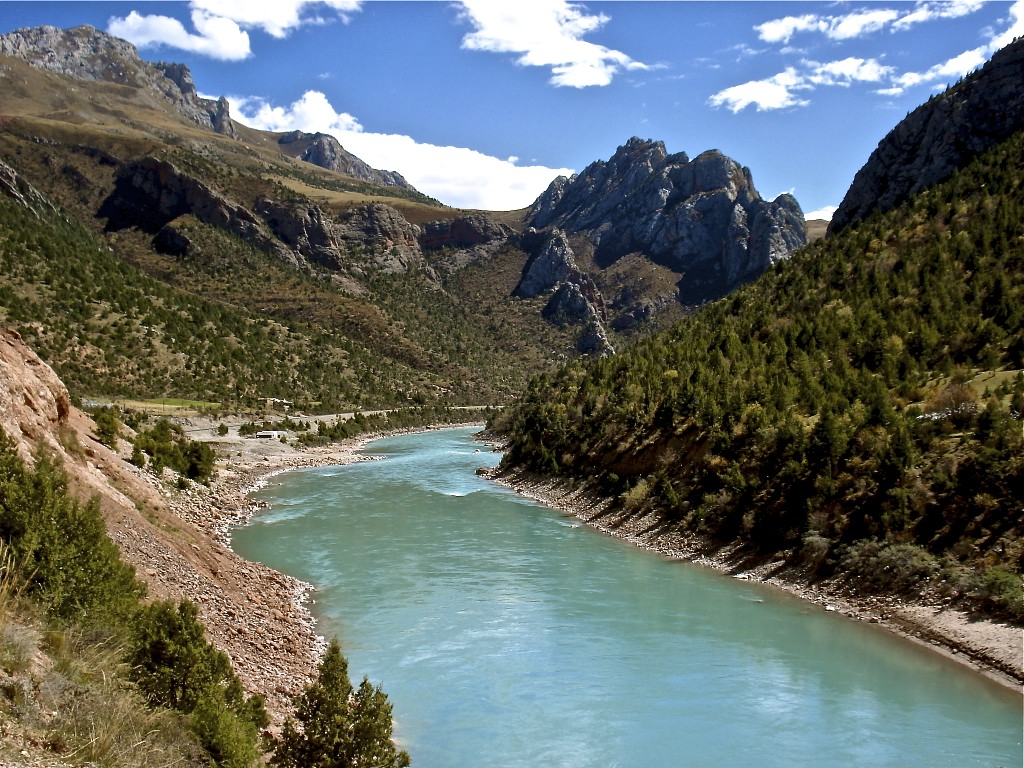
The Qinghai part of Kham: Yushu/Yulshul Tibet Autonomous Prefecture ཡུལ་ཤུལ་བོད་རིགས་རང་སྐྱོང་ཁུལ། in far southern Qinghai covers an area of 188,794 square kilometers (72,894 square miles). It is roughly the same size as the US state of Washington and about half the size of Germany. It has a population of around 295,000 with 97% of the population being Kham Tibetan. It has one of the highest percentages of Tibetan people anywhere on the Tibetan Plateau and has some of the best preserved Tibetan culture remaining. It is extremely remote being over 700 kilometers away from Xining and more than 1000 kilometers away from Chengdu and Lhasa. The average elevation of the prefecture is over 4000 meters with the highest point being Mt. Bukadaban, which rises to 6621 meters.
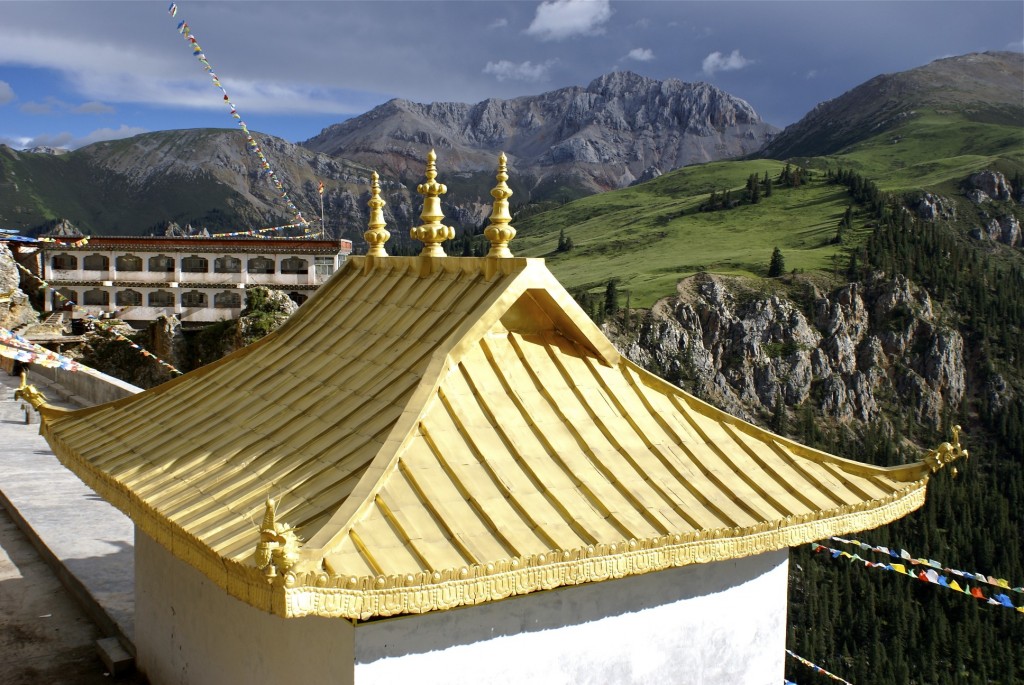
Gar Monastery གར་དགོན། in Nangchen county ནང་ཆེན་རྫོང་།
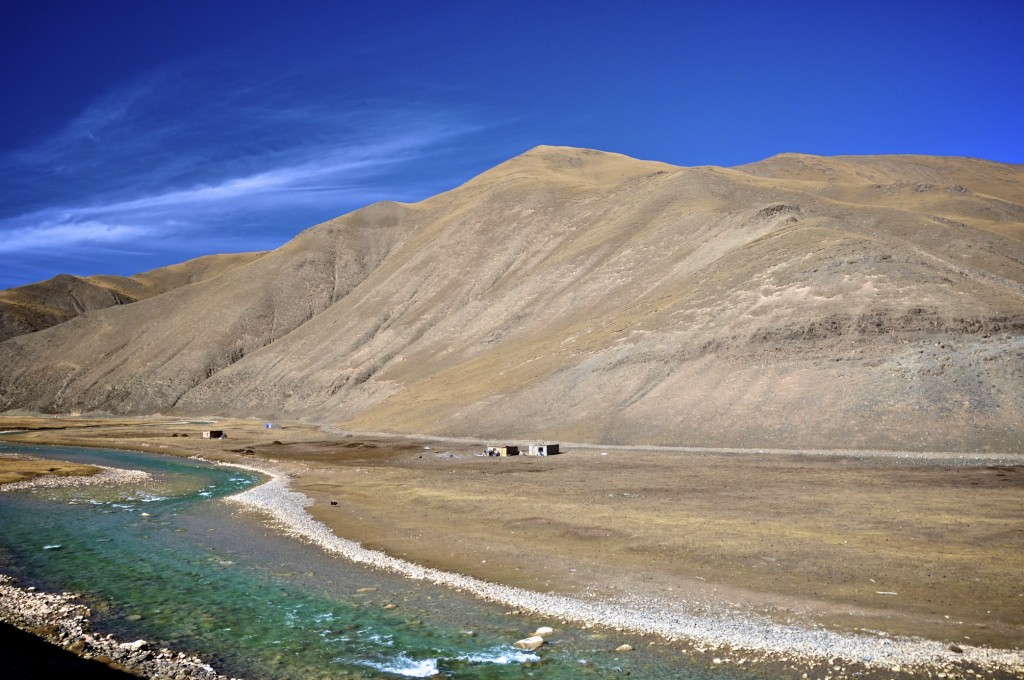
A main tributary of the Yangtze River in Drido county འབྲི་སྟོད་རྫོང་།
Yushu prefecture contains the headwaters of 3 of Asia’s longest rivers. The Yangtze (Dri Chu འབྲི་ཆུ་), the Yellow (Ma Chu རྨ་ཆུ་) and the Mekong (Dza Chu རྫ་ཆུ་) all have their beginnings in the prefecture. Most of the prefecture consists of high altitude grasslands lying at elevations between 4200 meters and 4800 meters. In the past, this region was nearly entirely nomadic, though now a large percentage of these herders have been relocated to small resettlement communities throughout the prefecture. Yak herding is still the most important way of life for the Tibetans in Yushu prefecture. Farming of high altitude barley, potatoes, and wheat is found in the fertile valleys in and around Jyekundo སྐྱེ་དགུ་མདོ་, the prefecture capital, and Sharnda ཤར་མདའ།, the county capital of Nangchen.
The far western portion of Yushu prefecture is an uninhabited nature reserve known as Kekexili 可可西里 in Chinese and A Chen Gang Gyab ཨ་ཆེན་གངས་རྒྱབ་ in Tibetan. It is also sometimes referred to by its Mongolian name of Hoh Xil. The Kekexili Nature Reserve covers an area of 83,000 square kilometers. It is the largest uninhabited region in China and the third largest uninhabited region on earth after the north and south poles. This region lies at an average elevation of 4800 meters and is permafrost. It is home to abundant wildlife including wild yaks, Tibetan antelope, white-lip deer, brown bears, snow leopards, black-necked cranes, wild donkeys and Himalayan marmots.
Well over 90% of the prefecture lies above the tree-line. The only exceptions are the Baizha and Jiangxi National Forests found in southern Yushu county and eastern Nangchen county. These dense evergreen forests consist of many logging communities, many of which are illegal.
The weather in Yushu can be quite extreme during the winter. The first snow in Jyekundo usually falls by mid-September and the last snow of the season usually is in early to mid-June. The northern counties of the prefecture can have snow and freezing temperatures all year round. The northern counties of Chumarleb and Drido often have winter temperatures that reach -25C to -30C. The southern counties of Yushu and Nangchen are a little milder with winter low temperatures reaching between -15C to -20C. Winters are generally dry and clear with abundant sunshine. Summers tend to be cool with the northern counties having highs between 8C and 12C and the southern counties having highs between 14C and 18C. Spring and fall can bring heavy snow to the region, especially in the higher elevations of northern Yushu prefecture. Every 5 to 7 years, heavy winter storms come leaving well over a meter of snow.
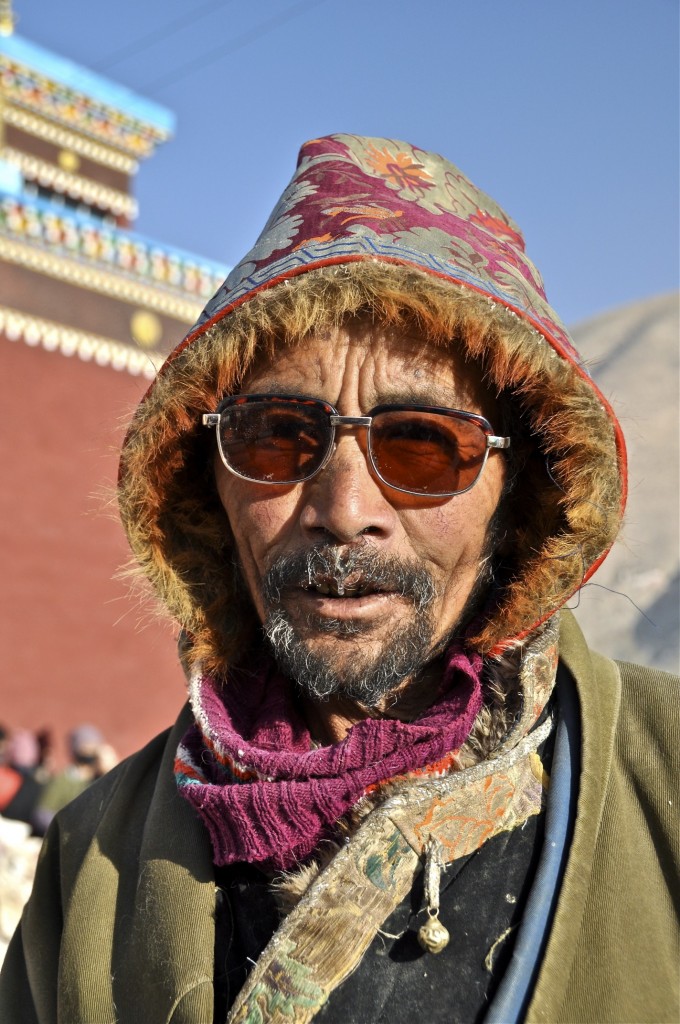
Khampa man from Jyekundo སྐྱེ་དགུ་མདོ་
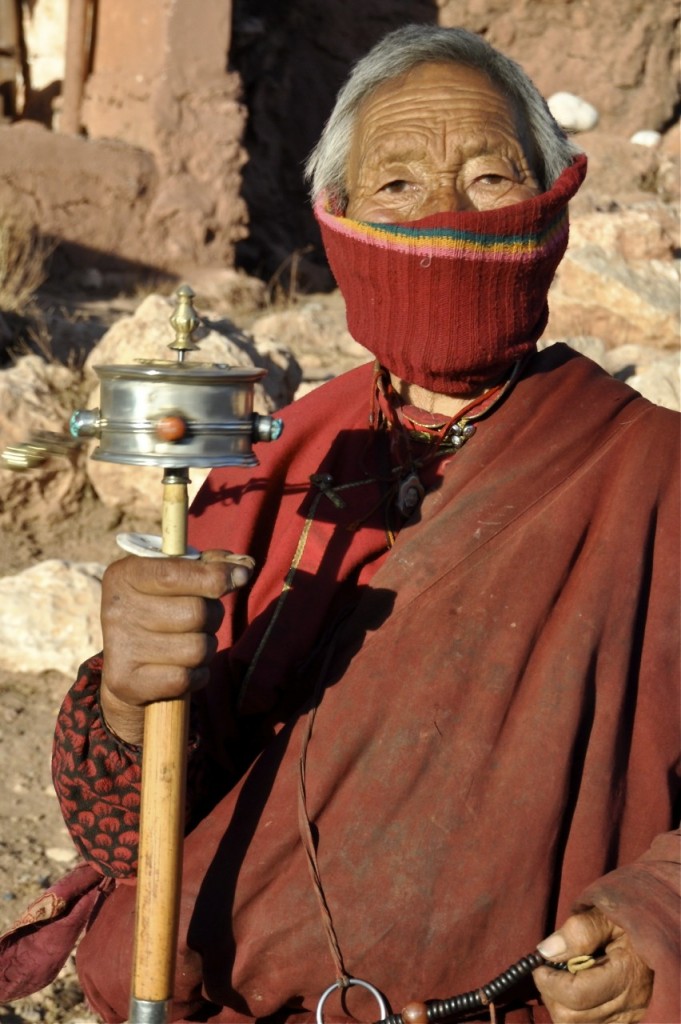
Kham Tibetan woman from Nangchen ནང་ཆེན་
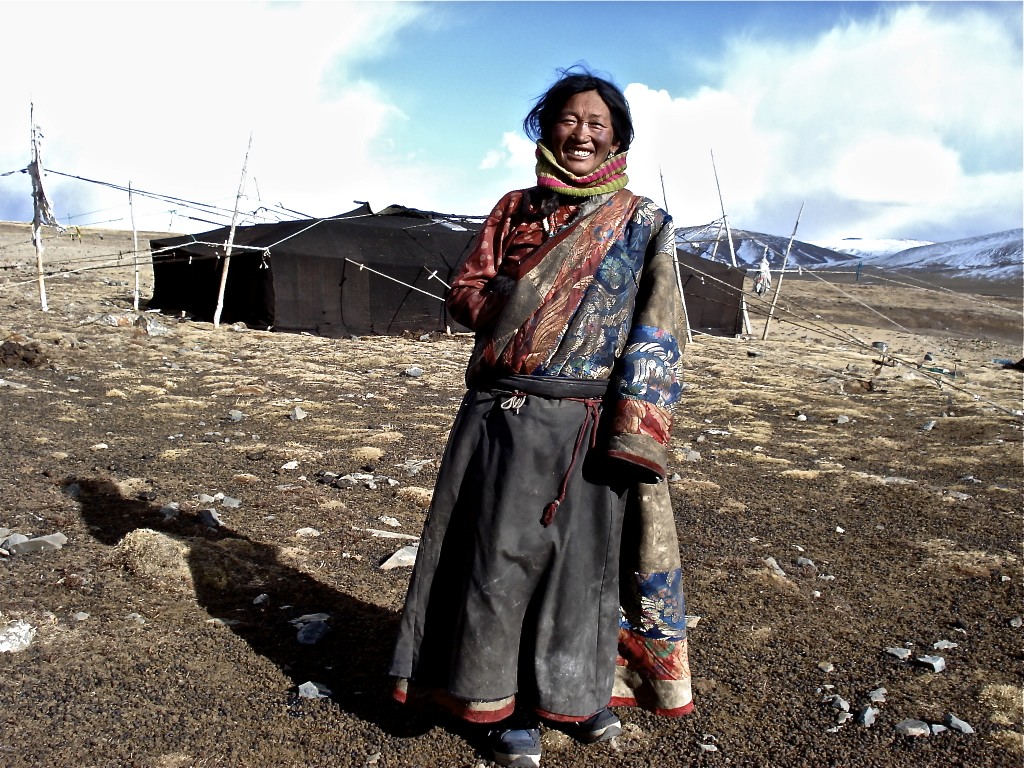
Nomad woman from Trindu county ཁྲི་འདུ་ in northern Yushu prefecture
Yushu prefecture is divided into 6 counties:
-
- Yushu/Yulshul 玉树/ཡུལ་ཤུལ་
- Nangqian/Nangchen 囊谦/ནང་ཆེན་
- Zaduo/Dzado 杂多/རྫ་སྟོད་
- Chengduo/Trindu 称多/ཁྲི་འདུ་
- Zhiduo/Drido 治多/འབྲི་སྟོད་
- Qumalai/Chumarleb 曲麻莱/ཆུ་དམར་ལེབ་
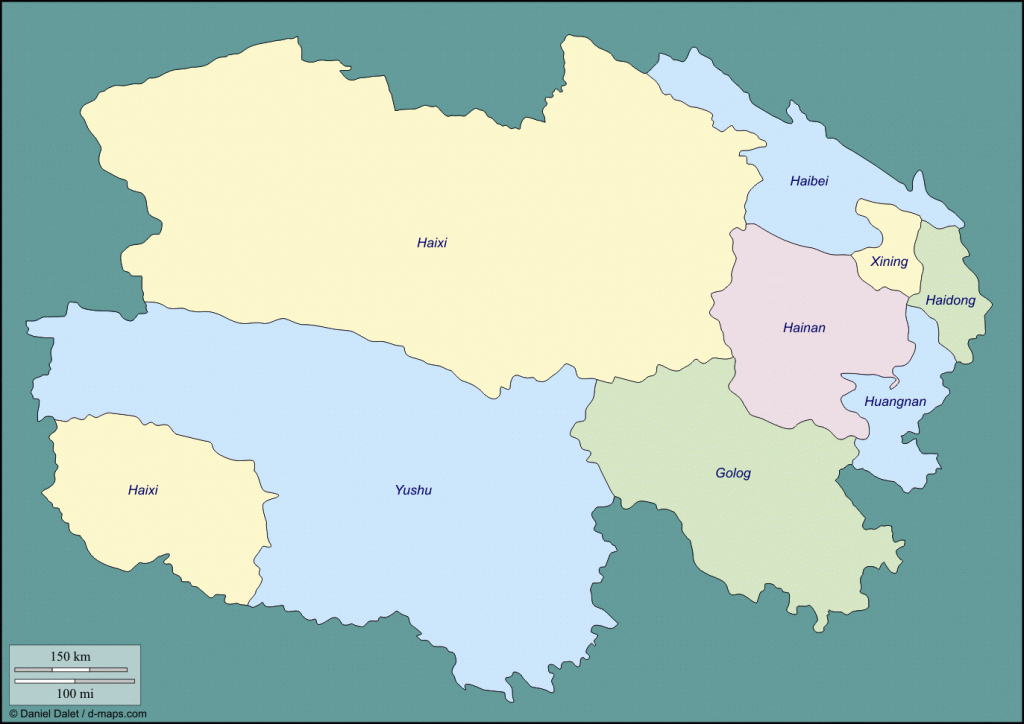
Map of Qinghai province showing Yushu Prefecture
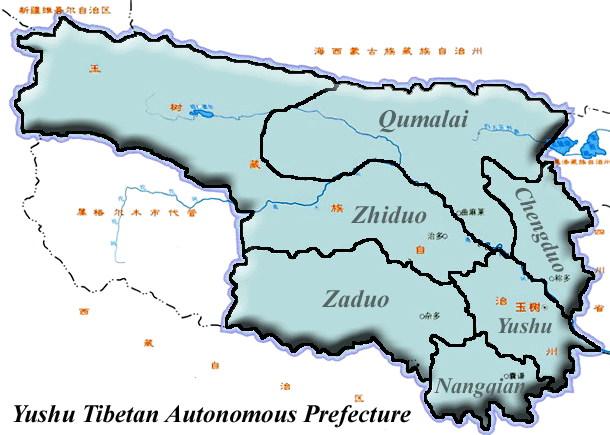
Yushu prefecture map from Plateau Perspectives www.plateauperspectives.org
The capital of Yushu prefecture is Jyekundo སྐྱེ་དགུ་མདོ་, known as Jiegu 结古 in Chinese. Jyekundo is the largest town in the prefecture and is located in Yushu county. On April 14, 2010, a 7.1 magnitude earthquake hit central Yushu county destroying much of Jyekundo and the surrounding area. Though the official death toll is only 2698, local government officials put the actual death toll at around 20,000. Over 85% of the buildings in Jyekundo were destroyed. As of January 2012, the majority of Jyekundo’s 80,000+ residents continue to live in government-given tents. Local government officials are optimistic that the rebuilding of the region will be completed by the summer of 2013.
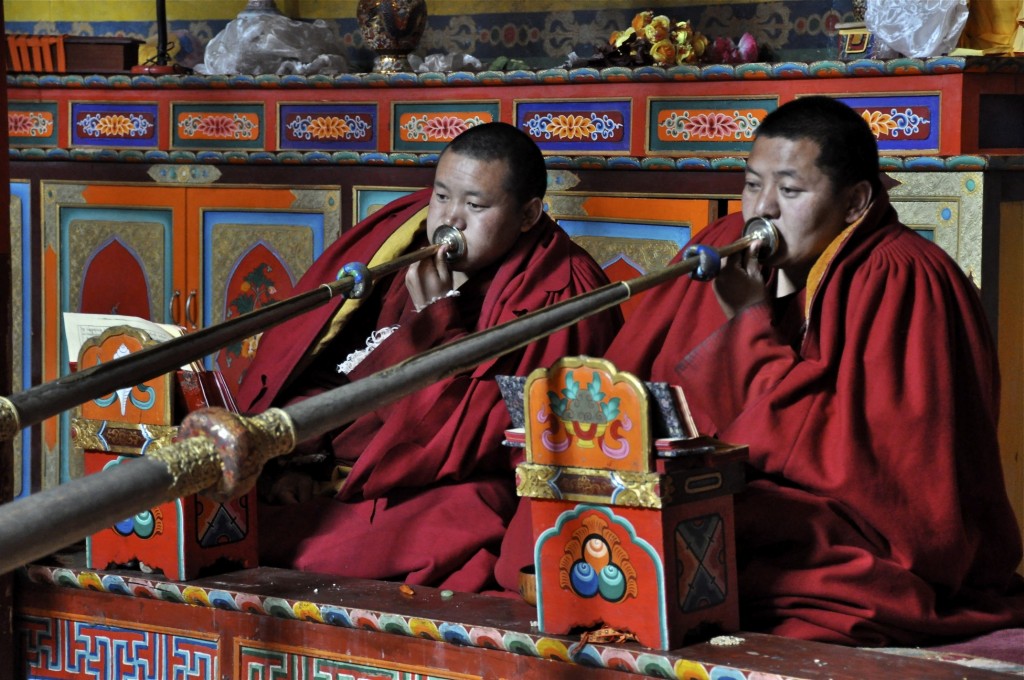
Monks in Domkar Monastery in Yushu ཡུལ་ཤུལ་
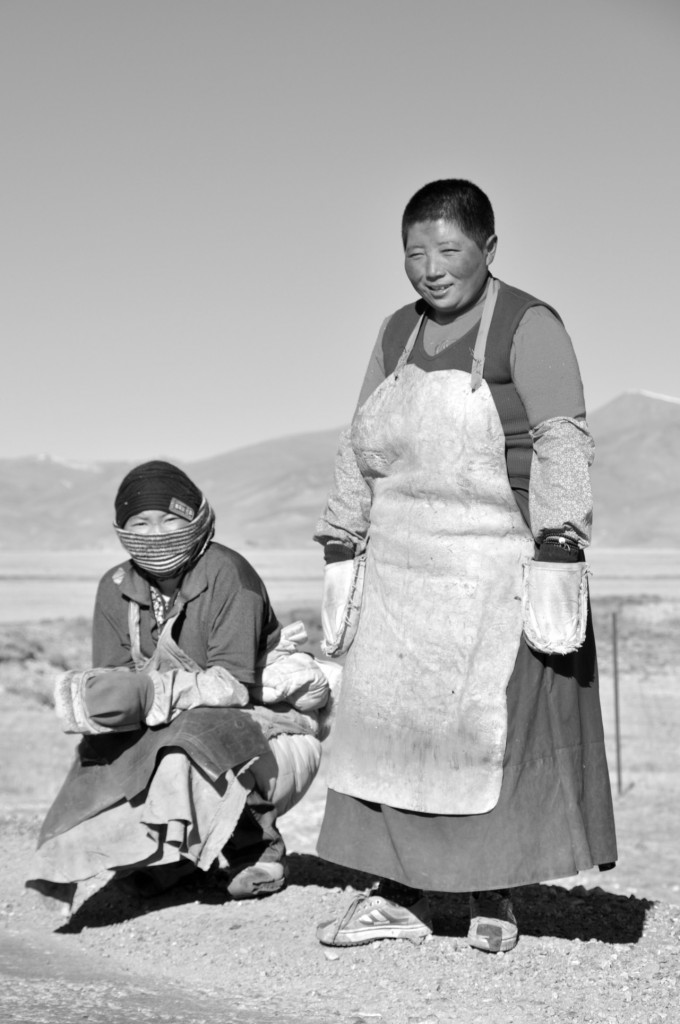
Nuns from Nangchen ནང་ཆེན་ on pilgrimage to Lhasa ལྷ་ས་
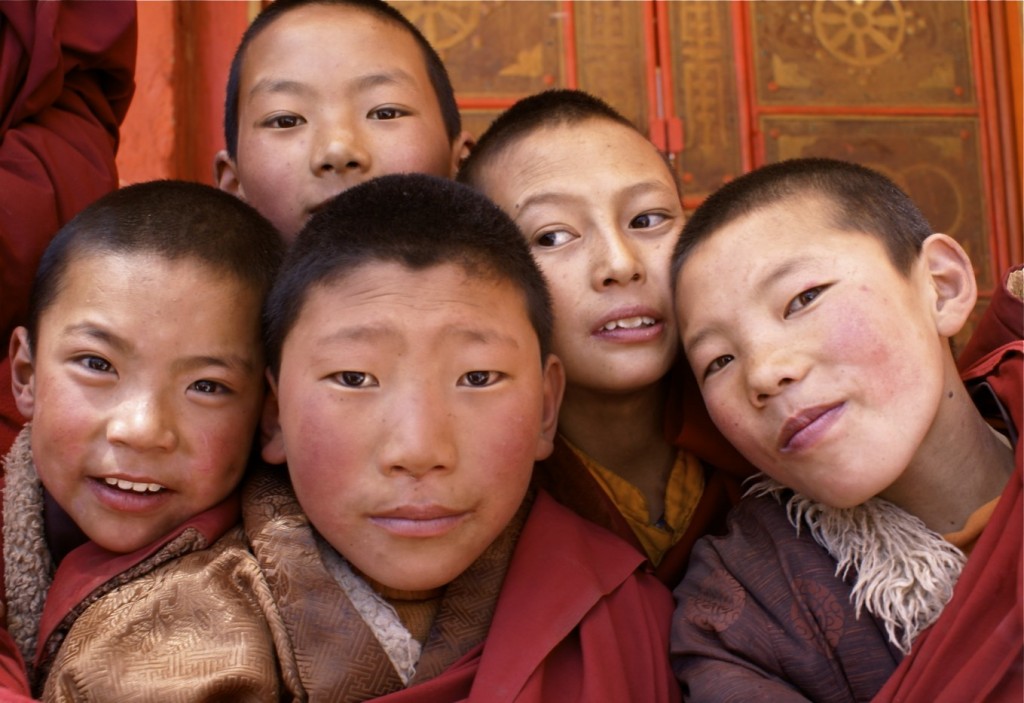
Young monks from Thrangu Monastery ཁྲ་འགུ་དགོན། in Yushu county ཡུལ་ཤུལ་
On August 1, 2009, the Yushu Batang Airport officially opened to the public. It was the first airport to open in Yushu prefecture. The airport lies at an elevation of 3950 meters and is one of the highest commercial airports in the world. It has regular weekly flights to Xining and Xi’an. There are plans to expand services to Lhasa and Chengdu. The airport is located 18 kilometers south of Jyekundo.
China National Highway 214 links Xining, the provincial capital of Qinghai, with Yushu prefecture. Since the Yushu Earthquake of 2010, work has been going on to upgrade this highway to a 4 lane expressway. Construction is expected to be completed by the end of 2013. Jyekundo is 821 kilometers south of Xining ཟི་ལིང་, while Sharnda ཤར་མདའ།, the capital of Nangchen county, is 985 kilometers south of Xining. Buses from Xining depart each day to all 6 county capitals of Yushu prefecture from the main long distance bus station. From Jyekundo, shared mini-van taxi’s depart throughout the day to the other 5 counties of Yushu prefecture as well as to other destinations within Yushu county.
There are also daily buses from Jyekundo to Chengdu, Sershul/Shiqu and Garze/Ganzi in Sichuan province as well as to Riwoche and Chamdo in the Tibet Autonomous Region. The train line to Lhasa goes through western Yushu prefecture, but doesn’t make any stops in the prefecture.
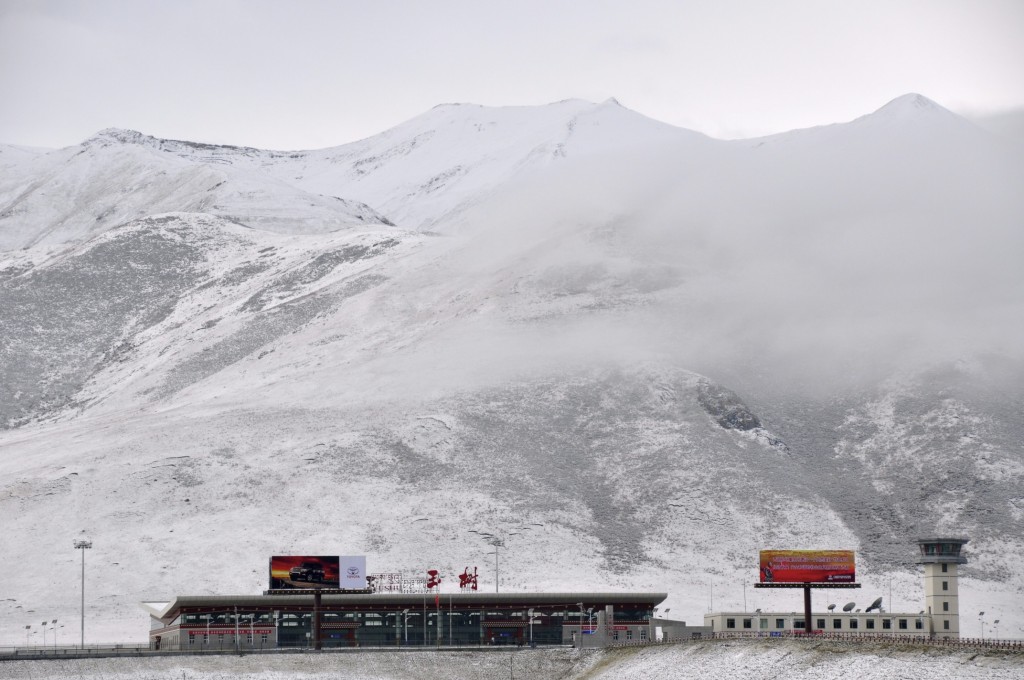
Yushu Batang Airport
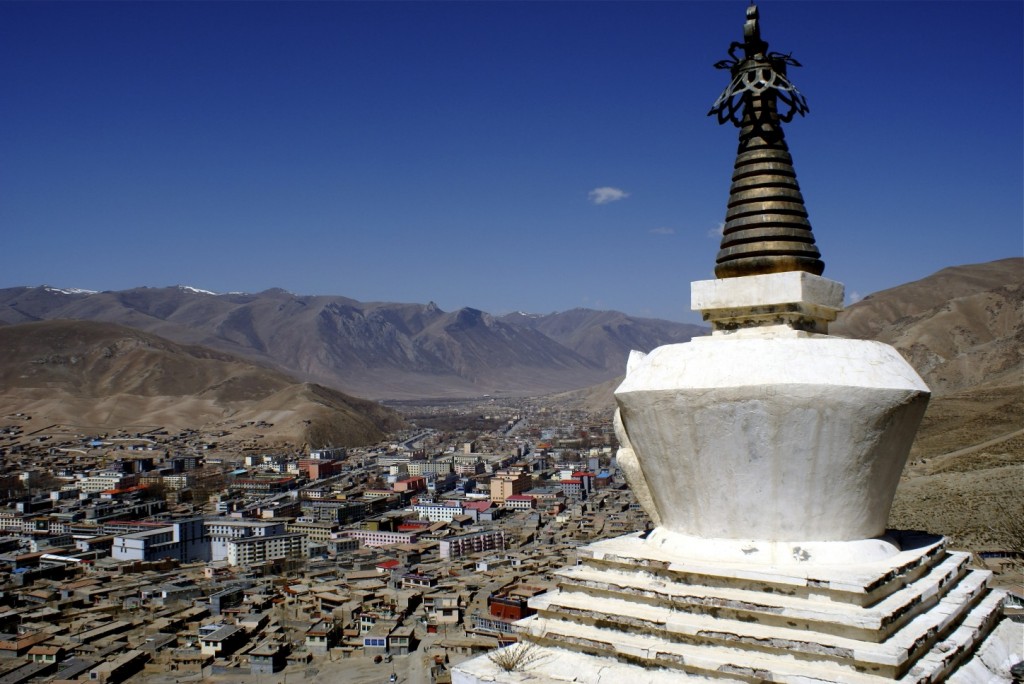
Overlooking Jyekundo སྐྱེ་དགུ་མདོ་ before the earthquake
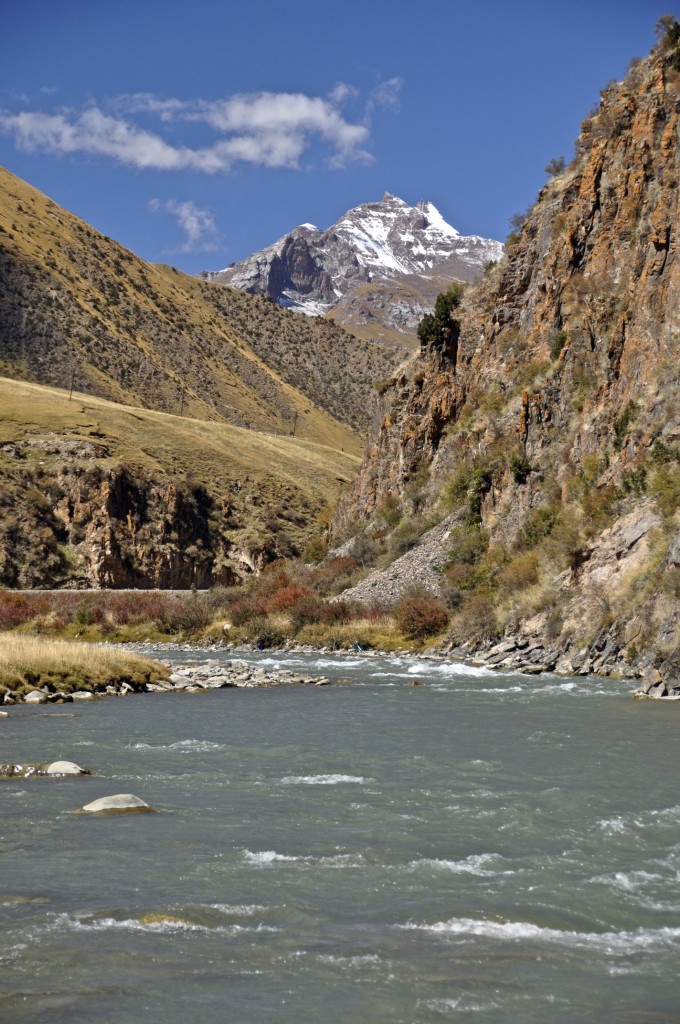
The holy mountain of Gado Jowa in Trindu county ཁྲི་འདུ་རྫོང་ in northern Yushu
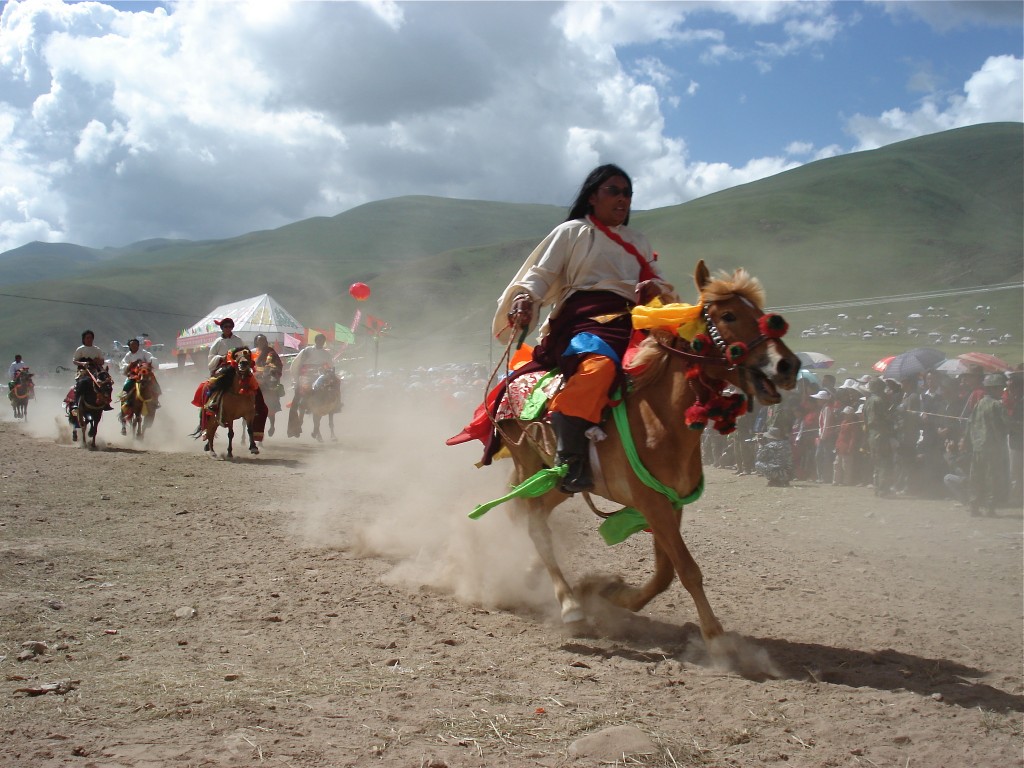
Racing during the Yushu Horse Festival
The annual Yushu Horse Festival typically takes place each year on July 25th and last for 5 days. The main horse festival has not taken place since the Yushu Earthquake, but could resume in 2012. In addition to the main horse festival, there are also smaller horse festivals that take place throughout the prefecture.
During Losar ལོ་གསར་, or Tibetan New Year, large amounts of Buddhist pilgrims go to one of the more than 350 monasteries found across the prefecture. The most popular destinations during Losar include the Gyanak Mani Temple རྒྱ་ནག་མ་ཎི་, Dhondrub Ling Monastery, the Princess Wencheng Temple and Gar Monastery. The Gyanak Mani Temple, located 6 kilometers east of Jyekundo, is the largest collection of carved prayer stones in the world. There are estimated to be over 2 billion carved prayer stones stacked over 3 meters high covering a 1 square kilometer area.
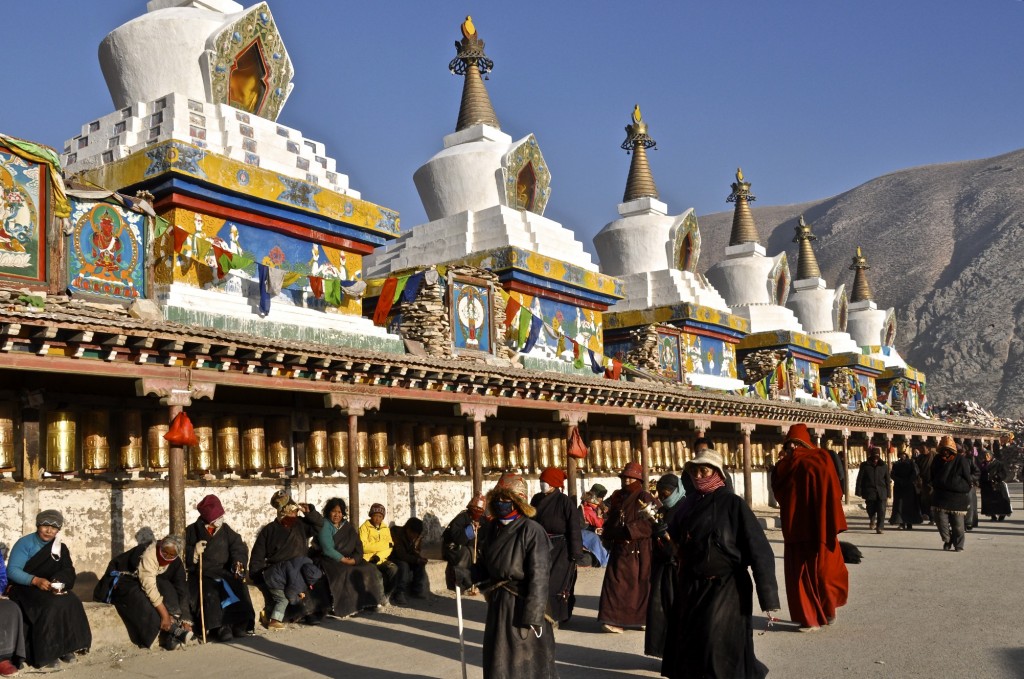
Pilgrims walking around the Gyanak Mani Temple རྒྱ་ནག་མ་ཎི་ outside of Jyekundo
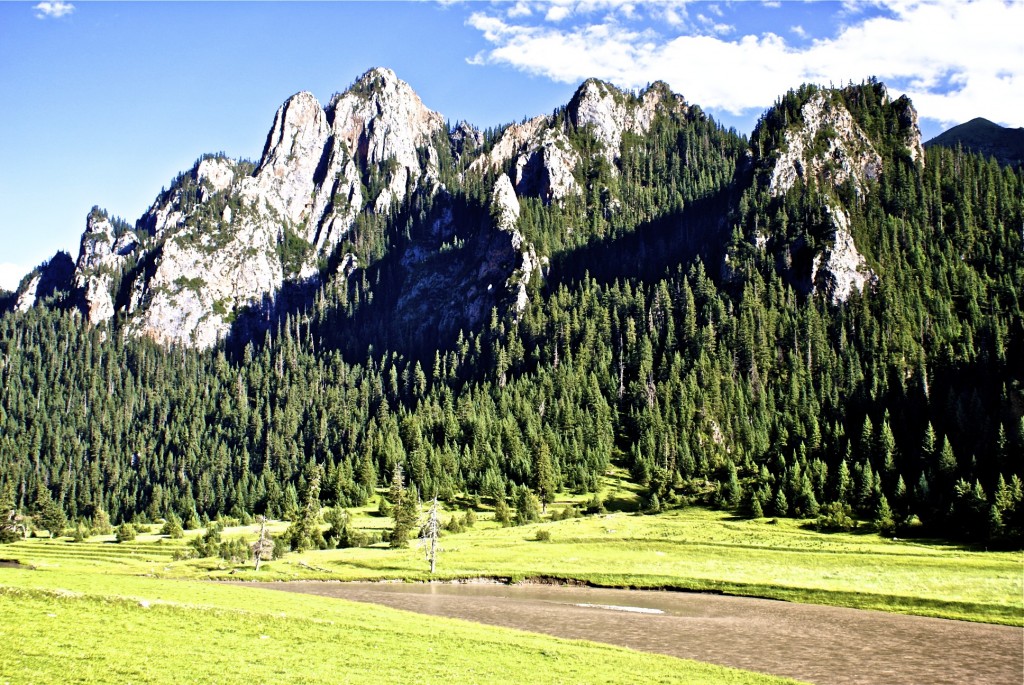
The Jiangxi Forest in eastern Nangchen county ནང་ཆེན་རྫོང་
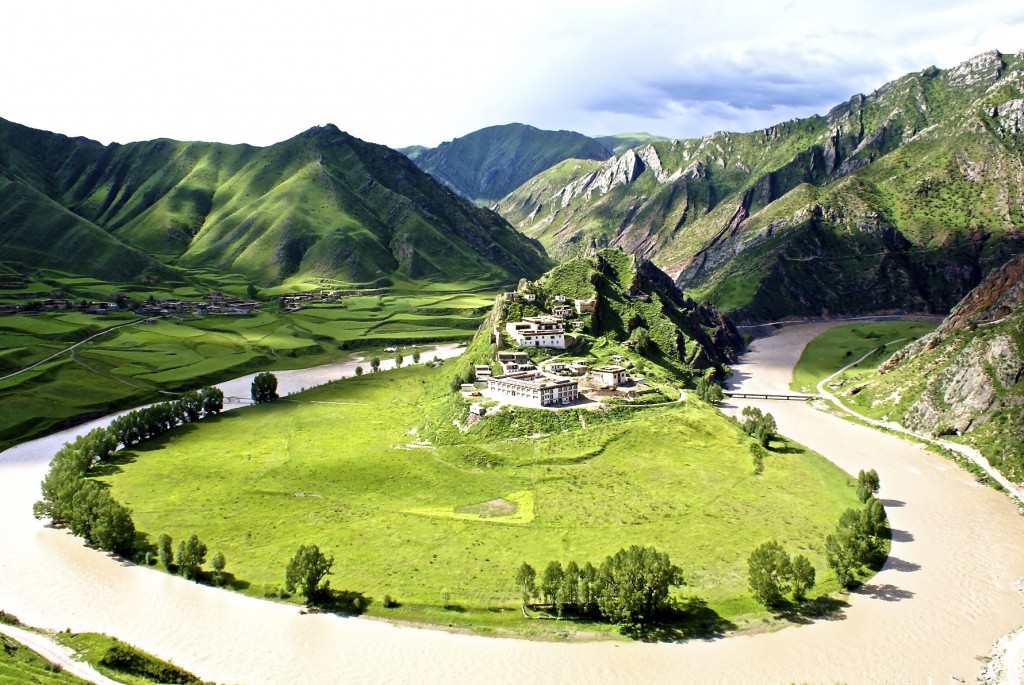
A remote monastery in Yushu prefecture during the summer
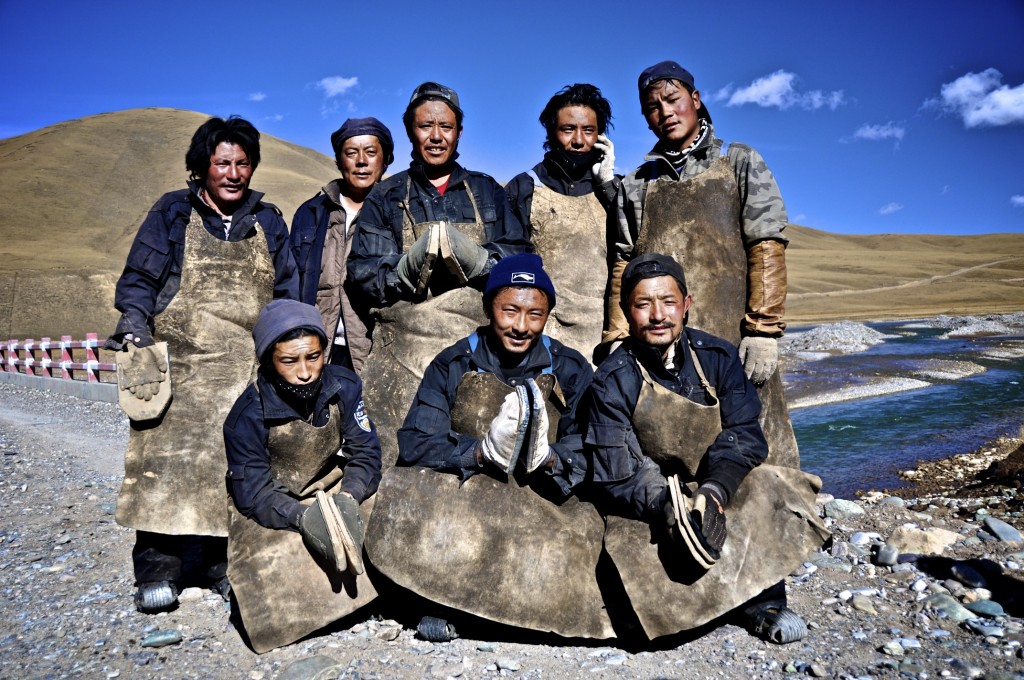
Buddhist pilgrims from Yushu ཡུལ་ཤུལ་ on their way to Lhasa ལྷ་ས་
Because of the remoteness of Yushu prefecture, relatively few travelers go there. However, it is one of the best kept secrets of the Tibetan Plateau. With Tibetans making up 97% of the population, Yushu offers travelers authentic, traditional Tibetan culture that is hard to find in other regions of Tibet.With dozens of peaks rising above 5000 meters, abundant wildlife, plenty of glacier fed rivers, remote nomad camps and lots of trails to explore, Yushu prefecture has everything an outdoors enthusiast could ever want.
The 6 county towns of Yushu prefecture are okay to spend a couple of days in, but the best places to see are in the remote and rugged countryside. There is not a lot written about this region in guidebooks so it is best to do some research before making the incredibly long journey to Yushu prefecture. If you have any questions about this area, feel free to contact me at thelandofsnows@gmail.com.
Losang བློ་བཟང་
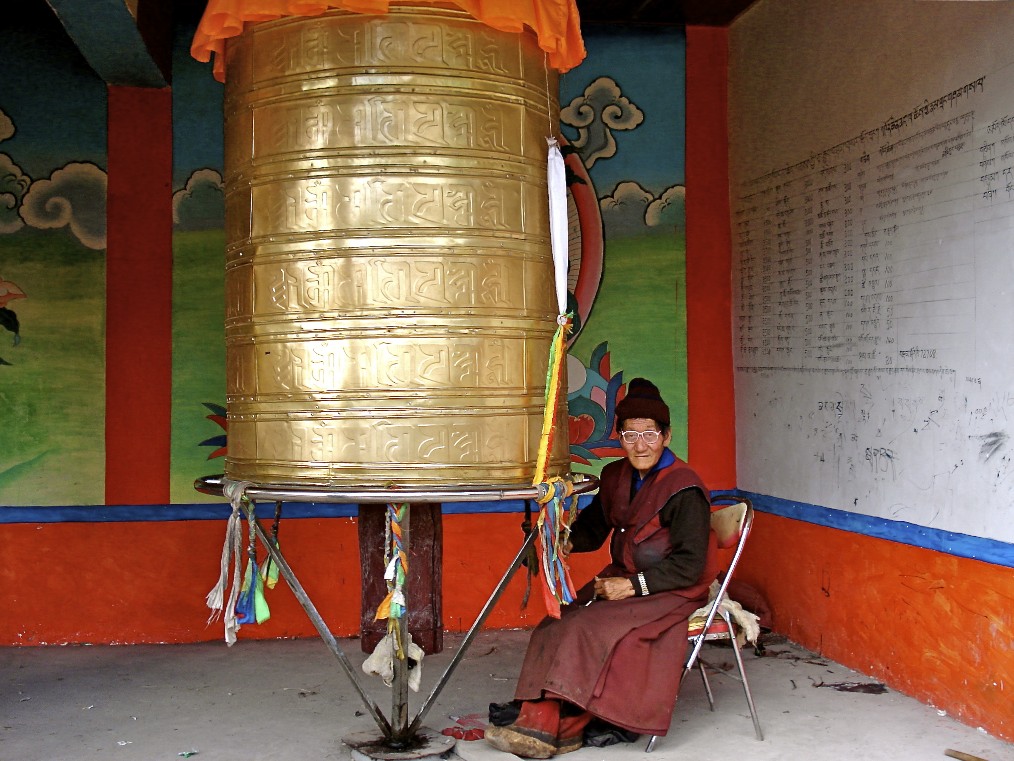
Monk spinning a large prayer wheel in Dzado county རྫ་སྟོད་རྫོང་ in southwest Yushu prefecture
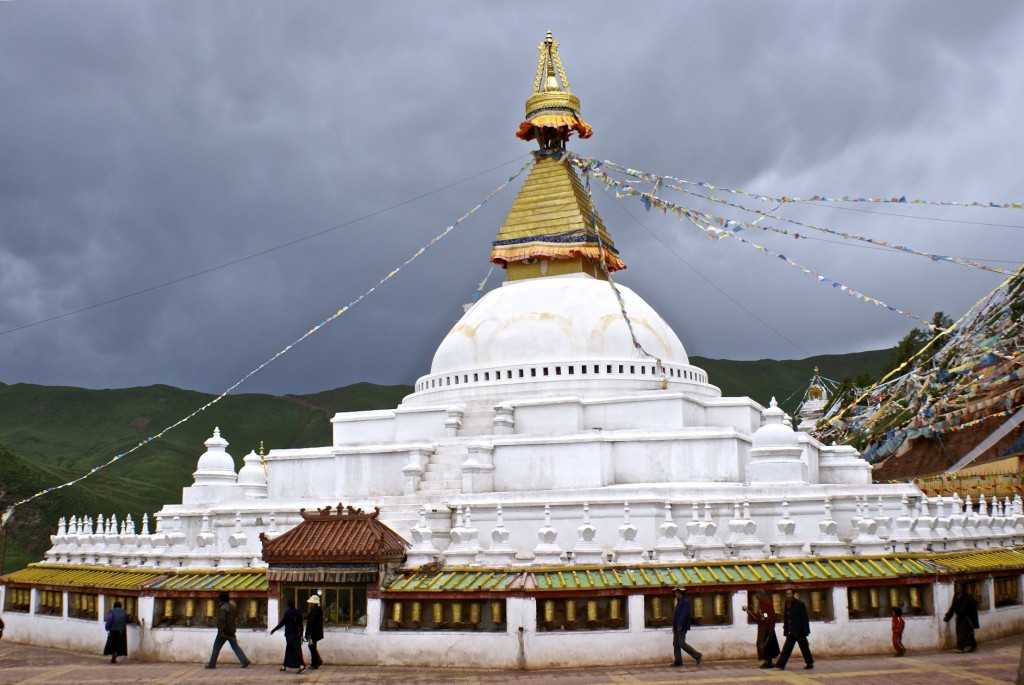
The very remote Trulshik Monastery འཁྲུལ་ཞིག་དགོན་པ་ in southern Nangchen county
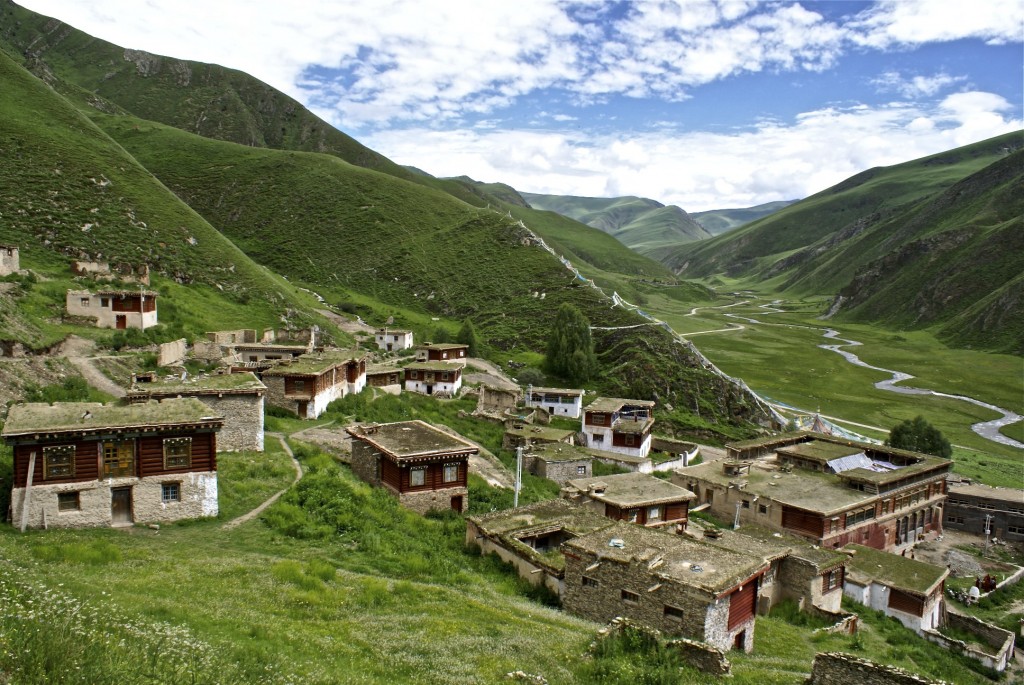
Surmang ཟུར་མང་ in southern Yushu county
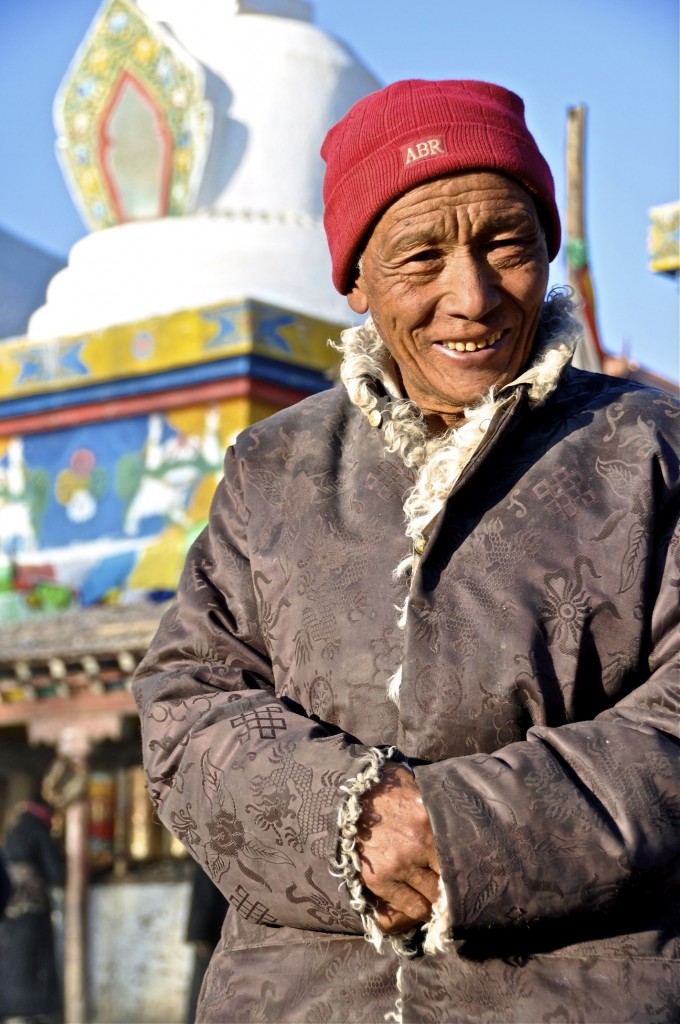
Khampa man from Yushu county ཡུལ་ཤུལ་རྫོང་།
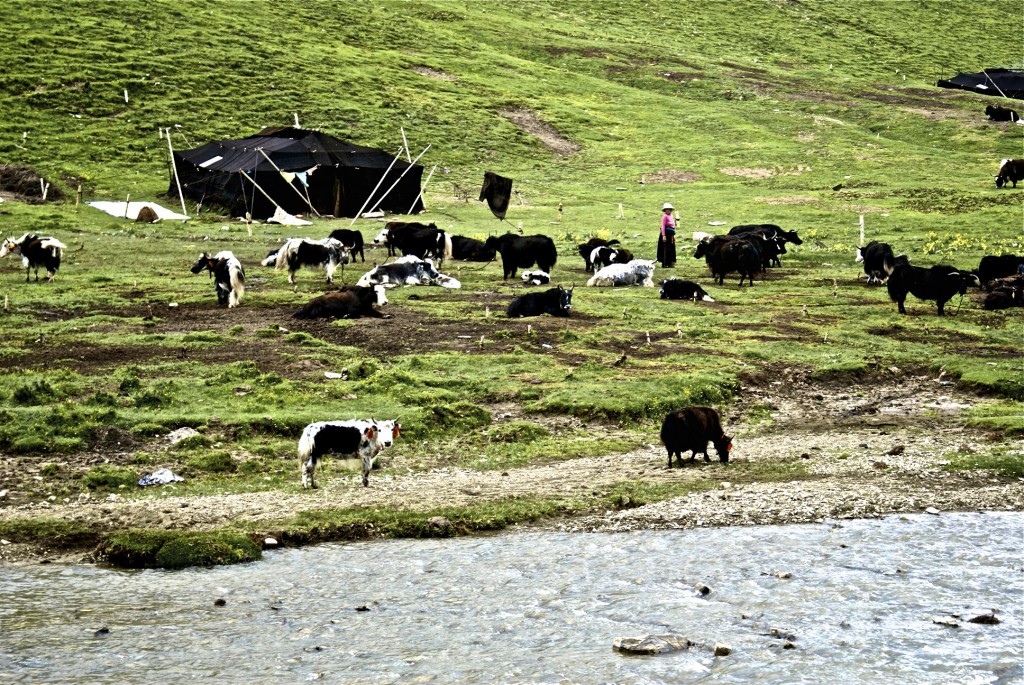
Nomads in a traditional yak wool tent in southern Yushu county
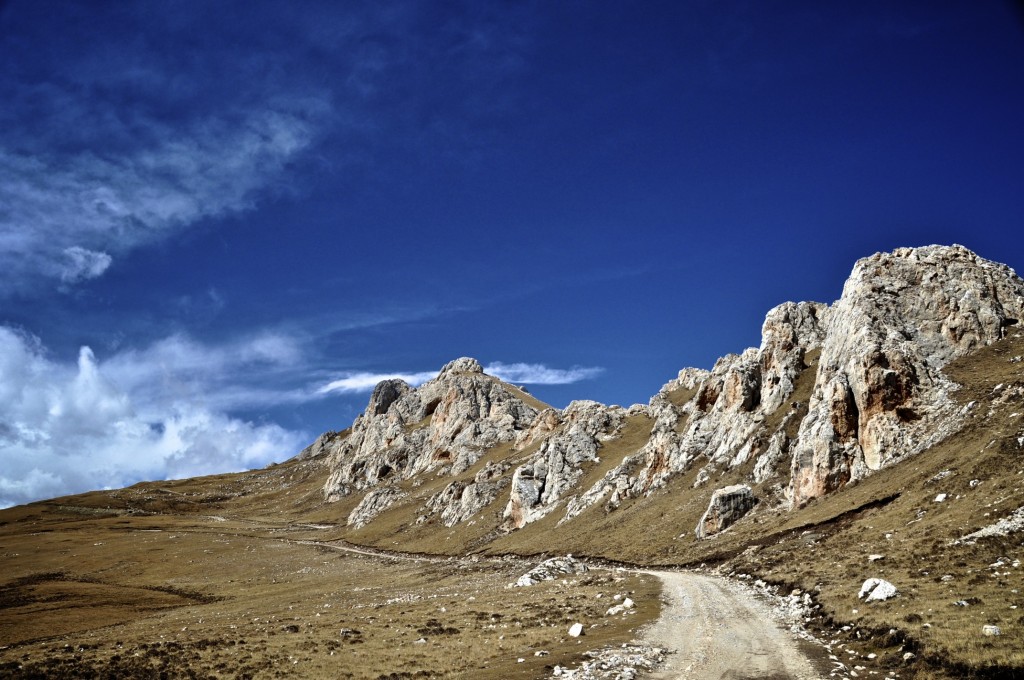
Many roads in Yushu prefecture are still rough and dirt
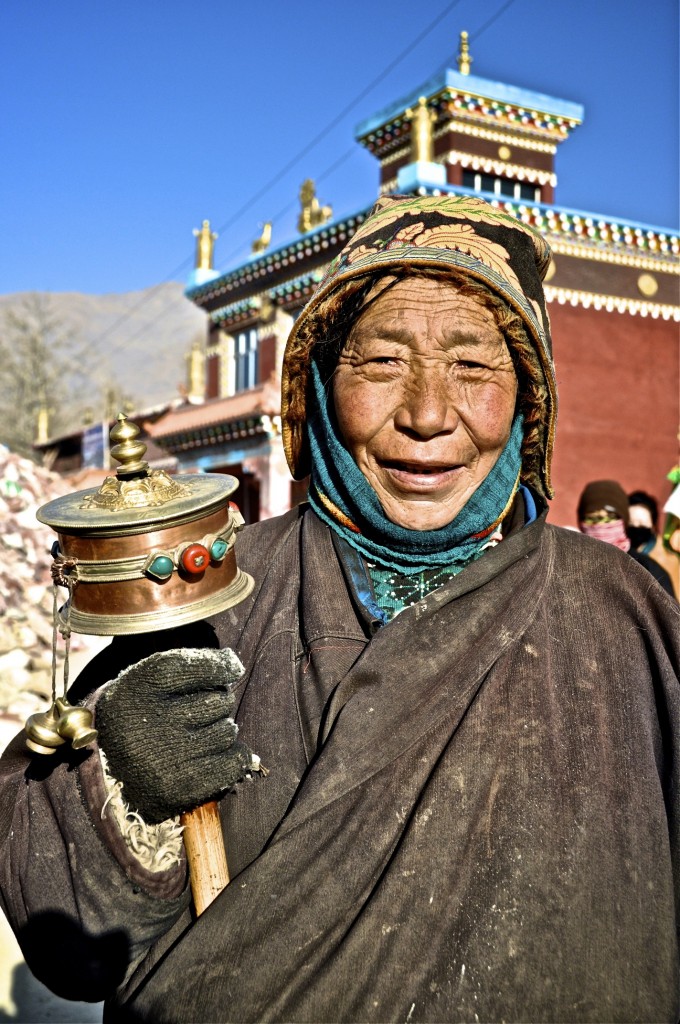
Tibetan woman from Yushu county ཡུལ་ཤུལ་རྫོང་།
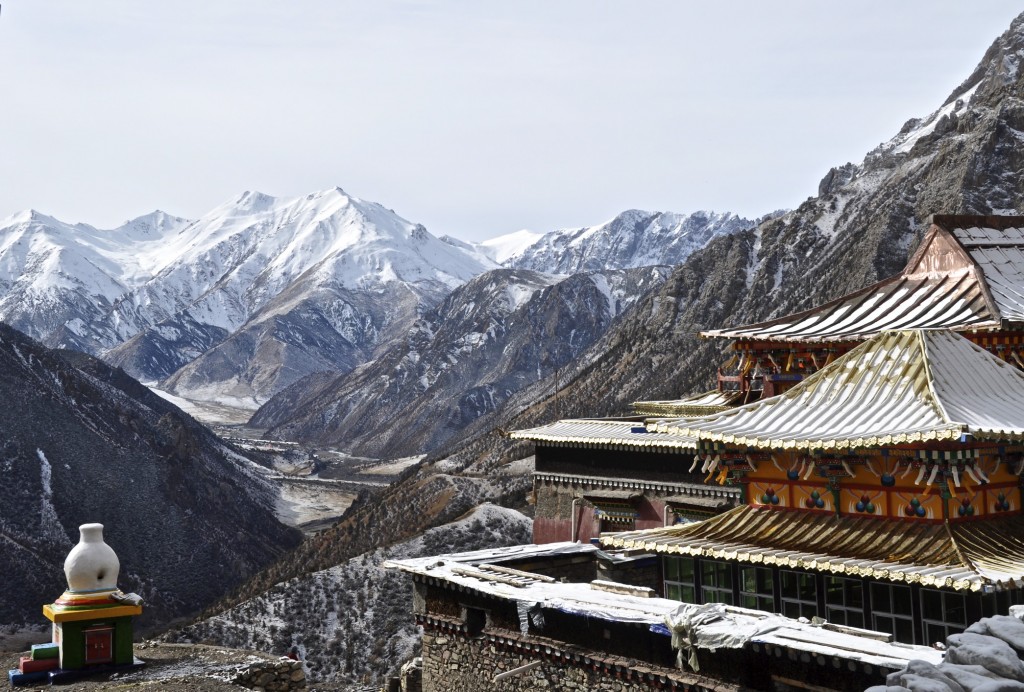
Dana Monastery རྟ་རྣ་དགོན་ in Nangchen county, one of the most remote monasteries in Yushu
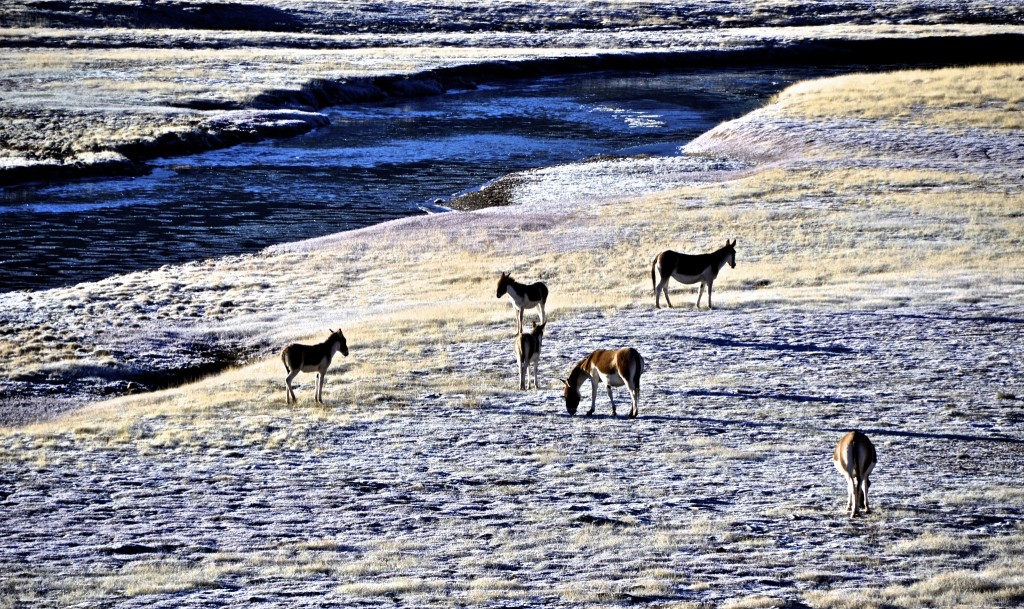
Wild donkeys, known as Gyang རྐྱང་, grazing in western Yushu prefecture
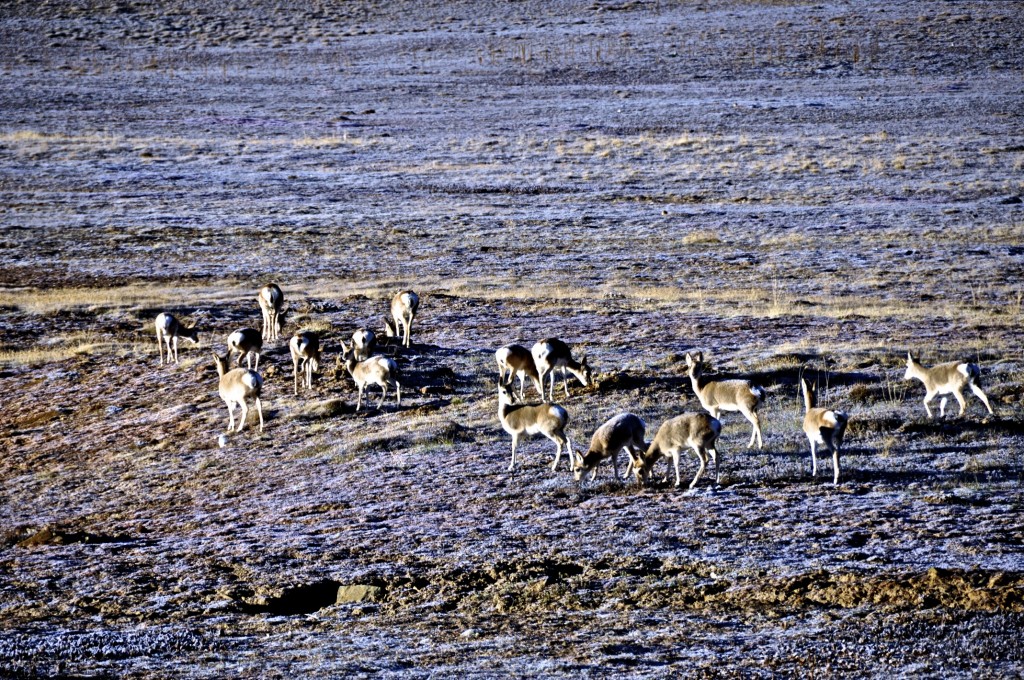
Gazelle grazing in Yushu
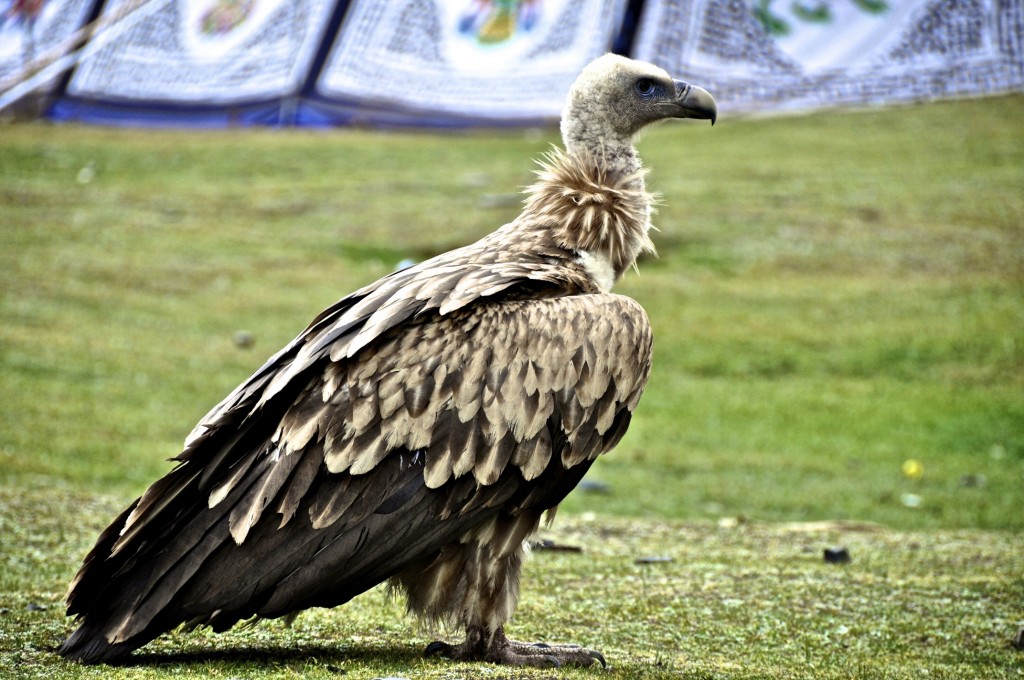
Up close with a Himalayan Griffon in Chumarleb county ཆུ་དམར་ལེབ་རྫོང་།
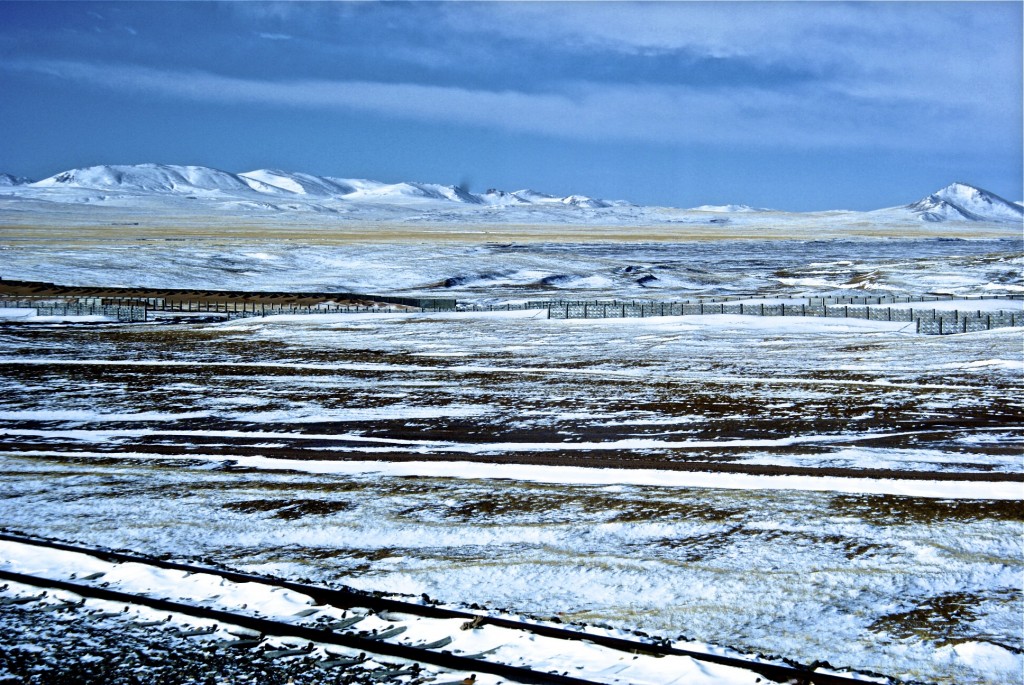
The Lhasa train line passing through the Kekexili Nature Reserve ཨ་ཆེན་གངས་རྒྱབ་ in uninhabited western Yushu prefecture

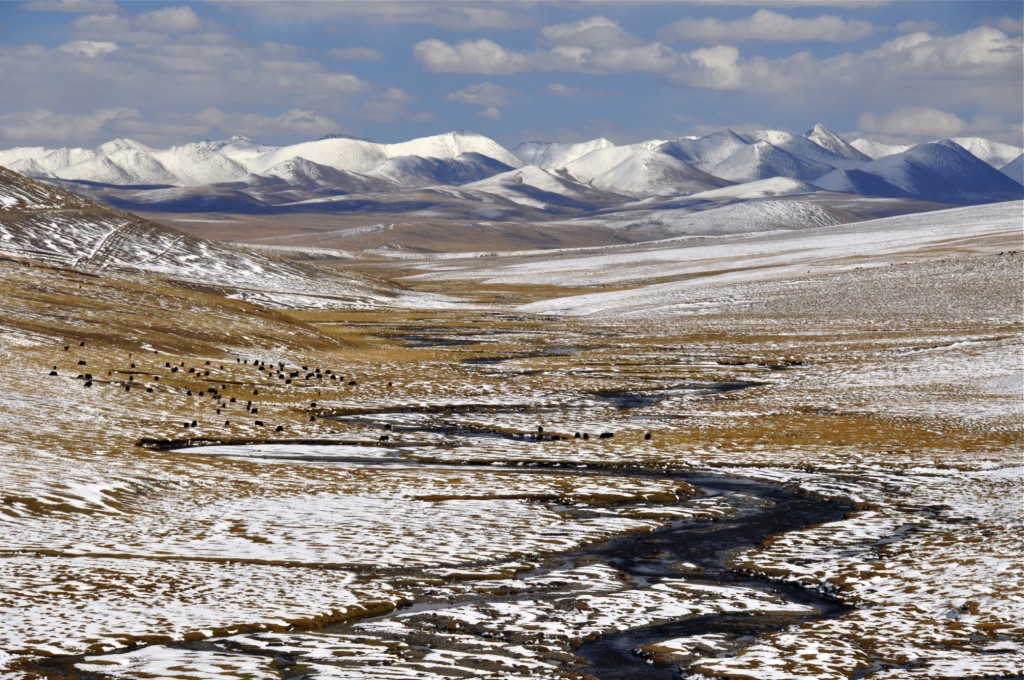
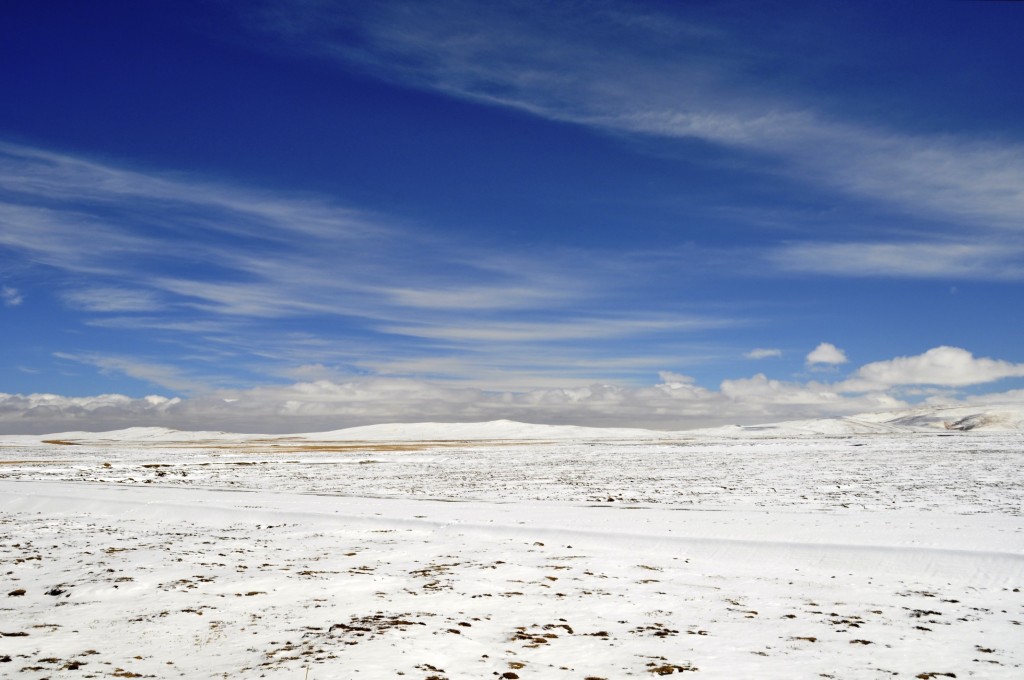
Keep up the good work, I read few articles on this internet site and I believe that your web site is very interesting and contains circles of good info.
Beautiful pics, like heaven on earth. Will one day visit the Yushu district. I live in Shanghai but love the western parts of China especially Tibet. Thanks for sharing pictures and info on Tibet. I’ve had your web site book marked the last couple of years.
Thanks for the compliments!
Losang
Pingback: Nangchen « The Land of Snows
Pingback: Two years since the Yushu Earthquake « The Land of Snows
Pingback: Why not Amdo and Kham?? « The Land of Snows
Thanks very much for all the wonderful pictures and stories about Yushu.I am very excited about reading this as I am going there in one and half weeks time.Hope I get to see the horse festival.Keep up the good work as this is a very interesting part of the world that I hope to share shortly with the people of Yushu.
Pingback: Tibet Photography Adventure: June 8th to June 22nd, 2013 « The Land of Snows
Pingback: 2013: Kham Overland Tour | Plateau Photo Tours
hello,
i just wanted to know what are the mountain passes you need to cross when travelling from lhasa to yushu?? and does Yushu ever grow grasses if so in which season? thank you
Thanks for this very informative documentation.
Are there any chances that a Horse Festival will be organized in Yushu before the city is fully rebuilt?
Willem….Yushu is a large 6 county prefecture that is larger than many Chinese provinces. Each year, numerous horse festivals take place throughout the prefecture. While the large Jyekundo Horse Festival has not happened since before the earthquake, other horse festivals have been going on. It is unlikely that Jyekundo will host a horse festival this year, but there might be one there next year. I recommend going to the Drido (Zhiduo in Chinese) horse festival, which will happen in late July.
Pingback: Naadam: Mongolia’s summer horse festival | Asia News – Politics, Media, Education | Asian Correspondent
Pingback: 2013: Lhasa to Everest Base Camp overland | Plateau Photo Tours
Hi Losang! You do great work and whenever I meet someone interested in Tibet this is the website I recommend to them
I’m wondering if you know whether there’ll be a big horse festival anywhere in Kham this summer, I read a while back vague plans to hold a big one after a long hiatus.
I read that Yushu reconstruction is mostly done and am wondering if there’s plans to have a festival there. Horse festival or no, I’d quite like to visit this summer 🙂
There is 75% chance that the annual Yushu Horse Festival will take place this year on July 25. I am still not 100% certain that this will happen, but early dialogue among officials in Yushu suggest that it might be happening this year.
Losang
Pingback: The Highest Airports in the World | ShawnVoyage
May I know what is the best way to travel to Yushu? Is Xining the best place to travel from? How frequent are transportation from Xining to Yushu? How long is the trip and how much would it cost?
Yushu is a large 6 county prefecture that is larger than many Chinese provinces. From the provincial capital of Xining, there are daily buses to all 6 counties in Yushu Prefecture. From Xining to Jyekundo (Yushu), there are between 8 and 12 buses per day. The bus takes between 14 and 18 hours and costs around 250 RMB.
Losang
Hello, Is there anyway of finding out if the Yushu horse racing festival is confirmed for this year?
It will be happening on July 25 this year.
Losang
Hi Losang,
I am a Canadian traveller that just arrived in Xining will be spending the next month in the Amdo and Kham regions, going overland to Yushu, Kanding and eventually to Chengdu. I plan to spend two weeks in the Yushu prefecture, and I would like to visit some of the more remote monasteries, such as the Gaden, Gar, and Dana monasteries, and I was just wondering if you know what is the best way to get to these monasteries? Do you know of a map with all of the monasteries on it? I understand that shared minivans can be taken as far south as Nangqen, but is it best to just ask around in a Yushu or Nanquen for a driver? Or will there be shared taxis/minivans leaving Yushu or Nangqen that will go close to these monasteries? I do alot of night photography so I hope to get some good photos of the monasteries at night.
Thanks,
Shawn DeGroot
Shawn,
Yushu prefecture, though amazingly beautiful, has very little tourist infrastructure. There are no detailed maps of the region. There are no English language websites for the area and no buses going to remote areas. There are daily buses from Xining to each of the 6 county towns in Yushu prefecture. There are also mini-van taxi’s going from Jyekundo, the capital of Yushu prefecture, to each of the other 5 county capital towns. In each of the 6 capital towns, you can take mini-van taxi’s to many (though not all) of the townships within that specific county. These taxi’s leave when they are full or you can hire the taxi out all to yourself. Ganden, Gar and Dana Monasteries are all located in Nangchen County. From the Nangchen capital town of Sharda, you can ask taxi drivers to take you to these places. Keep in mind that Nangchen county is over 98% Tibetan and the main language (and often the ONLY language) spoken is the Kham dialect of Tibetan. There will NOT be daily taxis going to these remote areas so you will need to negotiate with a driver to take you there. The 3 monasteries that you are wanting to go to are quite spread out. You can visit Gar on a day trip (returning to Sharda in the late afternoon). Ganden can also be visited on a long day trip (separate from a day trip to Gar). However, it will be a long trip to Dana. If you go to Dana, you might want to camp or kindly ask the monks there to stay the night in the monastery. If you have other questions, please email me at: thelandofsnows@gmail.com
Losang
Pingback: 2013: Tour | Plateau Photo Tours
Pingback: Gado Jowa: Tibet’s hidden holy mountain | The Land of Snows
Hello,
Nice website, I’ve been following it for a couple of years now. Do you have any suggestions for a bicycle route from Yushu to Kanding? Is there a parallel road to the 317 that can be used for cyclists? Also, Are there any cycle routes that run north to south in Western Sichuan, such as from Garze Town to Litang to Shangri-La in Yunnnan?
Thanks for any help!
Pingback: 2015 Tibet Travel Regulations | The Land of Snows
This is one of the most interesting and informative articles I read about the region. The photos are beautiful. Amdo is truly beautiful.
Hi everyone,
Do you know is there any restrictions to visit Sichuan and Qinghai parts of Kham from 28th of September to 10th of October?
Thanks and piece!
All areas of Kham located in Sichuan and Qinghai provinces are open and have been open for the past 4 years without any problems. Enjoy your journey!
Lobsang
Hello, I am so excited to be returning to Qinghai. I am hoping to attend the Yushu Horse Festival. Can anyone confirm if it is happening?
Also, is the easiest route to Yushu through Xining? The route through Chengdu and Kangding sounds amazing, but I don’t think that I have that much time. Are there viable routes from Yunnan?
Patrick…Tashi Delek. Though the Jyekundo Horse Festival was suspended for a few years following the April 2010 Earthquake, the horse festival has resumed as usual starting from 2014. This years festival will again begin on 25 July. There are daily flights to Jyekundo (Yushu) from Chengdu, Xining and Xi’an. This is the fastest and easiest way to get there.
Lobsang
Hello Lobsang
I have been reading your website with great interest, thank you for sharing all these informations. Not so easy to get informations for some part of China
I am planning a trip of 30 days from Chengdu to Danba – Tatong – Ganzi – Yushu and all the off track nice places you are showing on your site. I found the Qinghai part more difficult. What I am thinking now would be from the Yushu part to go to Maduo then Huashixia (the name I have on a map !) – Dari – machen – Banma and then go down to Chendu
Do you think it is nicer than from Maduo go back to Xining ? The Qinghai lake seems pretty touristic to me.
As I understand I have to get a permit for Machen, Dari and Banma. Do you know if it is possible to get it in Maduo ?
Thanks again, I was twice 4 weeks in Yunnan and saw amazing people in all the border zones. I love the authenticity of the people there
Rene
Rene,
Permits for Golok prefecture can ONLY be obtained from the main police office in Machen. They cannot be obtained in other counties. Yes, the route from Maduo to Huashixia and then east to Darlag (Dari), Machen (Dawu) and Pema (Baima) is quite nice and is better than the direct route to Xining. Enjoy your journey!
Lobsang
Thank you Lobsang
Hello Lobsang,
Thank you for an amazing share.
I hope to visit Yushu in October and already falling in love with the place.
What are the options for accommodation, are home-stays available and how do we find them. Are homestays relatively common in the area…in the case we find ourselves in the middle of nowhere, how easy or hard is it to find a place to stay?
Also of the 3 monasteries Dana, Gar and Ganden, which are your favourite? We will try to make a trip out to see one or two.
Are there any particular small hike destinations that we can see or explore as well?
Thanks for your help!
Al.
Most of Yushu Prefecture has little in the way of tourist infrastructure. Decent hotels are found in all 6 county towns in Yushu Prefecture, but outside these county towns, you are limited to camping or asking local families/monasteries if you can stay with them.
I love all 3 monasteries you listed: Dana, Gar and Ganden. I suppose if I had to choose a favorite, I would choose Gar.
Hiking opportunities in this region are literally everywhere you look! As there is little infrastructure here (and VERY few foreign travelers that go here) there are no “official” trekking route. Simply set out for one of the countless mountains that are constantly surrounding you in Yushu.
Lobsang
Dear Lobsang,
thank you very much for this amazing page, the great pictures and the detailed descriptions. I am planning to travel to Yushu in July and am just wondering whether you can recommend one or two stopovers on the way coming from Xining in order to have more time to adapt to the high altitude in Yushu? On the map, Gonghe (elevation around 2800m) and Xinghai (elevation 3300 m) look like good places to adapt, but I am wondering whether these are places worth staying, whether there will be accomodation there and whether it is possible to travel there with public transport?
Thank you very much for your help!
Most of the route from Xining to Yushu is barren and unpopulated. You can stop in Chabcha (Gonghe), but there are no direct buses from there to Yushu. You will probably have to stand on the road and wait for a bus from Xining coming through and try to see if they have an extra seat. The same with Tsigorthang (Xinghai)…there are NO buses from there to Yushu. If you are taking the public bus, you probably will just have to take the direct bus. If you take a private vehicle, then you can stop along the way.
Lobsang
Tashi Delek, Lobsang.
Thank you for all the information and for your dedication when writing about this remote yet so beautiful part of the world. As I plan to go to Jeykundo in the beginning of July and would like to spend a few days in the Nangqen area, I was wondering if a return to Chengdu by plane is advisable (maybe too costly) or is it better to endure a super long bus ride. Perhaps is it better to go to Xining instead?
Also, are the monasteries around Nangqen open to foreigners? Can I find accommodation there?
Thanks a lot for your help.
Dear Lobsang
Was looking for more information and By chance came across your detailed written page and wonderful photos on Yushu.
Am contemplating whether to join a group who’s going to Yushu next month July. Will be flying from Chendu to Yushu Airport but worried about the high altitude.
Any suggestions to avoid AMS? Highest ever went was 1600m. Tks.
Only way to avoid AMS is to not go to high altitude. There are things you can do to minimize the risk (meaning acclimatizing slowly), but there is NO way to avoid it entirely except to not go to high altitude.
Lobsang
Dear Lobsang
I spent 3 weeks in Automn around NAngchen and Yushu. That was just extraordinary.
I am now looking for a “similar ” region in Kham or Amdo (little tourist, wild, nice monasteries where we can stay overnnight), but to go by bicycle for a couple of weeks in june next year.
I had a look around Xining, Langmusi … but seems very crowded now.
Would you have any advice for me ?
Thanks for your website. Amazing amount of information.
JC
Me Again.
For example, why not leaving from Xining, going to Langmusi, labrang and then travelling around but it is hard to find some information about the suroundings. Are there any little monsateries , quiet in this area ?
Thanks again
JC
Tashi Delek, Lobsang.
Exactly WHERE are the horse races held in Yushu. I can find this info nowhere online. I want to book a stay as close to the horse race locale as possible… thank you! Gina in Chengdu 🙂
The horse facing festival is generally held at the large racetrack located on the far west end of town.
Lobsang
Hi, thanks for this beautiful article.
I’m planning to go there tomorrow. Are there currently any restrictions applicable to foreigners on the route coming from Chengdu and then in the area? I will be using my own vehicle.
Thanks a lot!
No, there are currently no travel restrictions in the QInghai part of Kham. The Sichuan part of Kham is open, except for Larung Gar and Sertar (Seda) County.
Lobsang
Pingback: LOCATION – Chaka Salt Lake
Great information! I would like to combine a trip to Nangchen (Gaden-, Gar- and Dana monastery) with a visit of the Yushu horse festival at the end of the trip. Is it difficult to get a hotel room in Yushu during the time of the horse festival? Should I book already now?
Concerning Nangchen county, is it possible to just arrive in Nangchen town and find a driver or find some shared vans to visit these 3 monasteries? Is it also in Nangchen very crowded in July, since it is the main holiday time (meaning difficult to find accomodation or drivers)? Until now I have only travelled in Kham and Amdo in September and July. Thanks.
Carl
Hi Lobsang !
Thank you for this article. I loved reading it. Do you think it possible to reach Gar or Dana monasteries in December? Would you have any contact of driver?
My email is smangion@gmail.com
Thank you.
Stephen